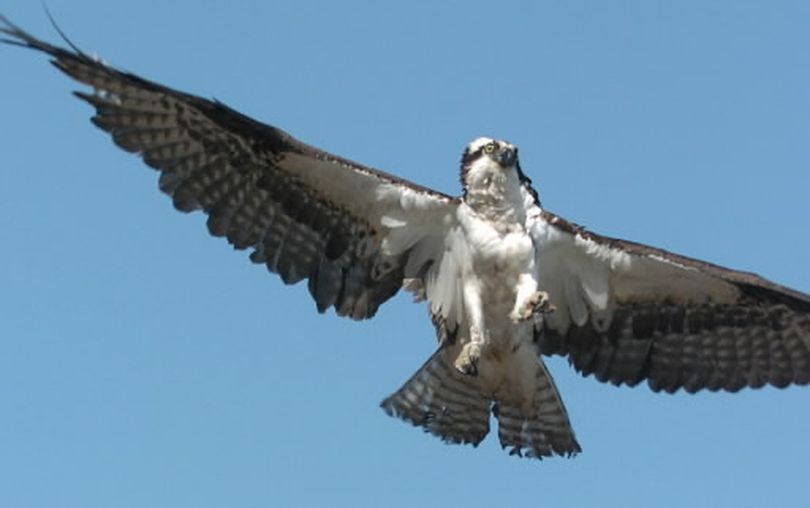It’s time for ospreys to leave, but some postponing migration

BIRDWATCHING -- Ospreys were late to arrive in the Inland Northwest this year, and some of the fish-eating hawks are hanging around longer this fall, possibly because they got a late start producing their young.
According to Coeur d'Alene Audubon Society Records, ospreys usually arrive to North Idaho in mid- to late-March. This year the first sighting was April 4, probably owing to the lingering wintery conditions.
Normally, the ospreys begin leaving in late September and are usually gone by late October, as they migrate to far-flung summering areas. (See below) But area birders have been reporting late-stayers this week:
- "I saw an osprey Nov. 1 on the Little Pend Oreille National Wildlife Refuge," said refuge wildlife biologist Mike Munts. "It was a first for November of the species for me."
- "Observed a very late pair of osprey (near Spring Valley Reservoir on Monday), said Terry Gray of Moscow, noting that they were near a nest with a fledgling that appeared to be ready to fly. When he saw them last, they were leaving the reservoir about noon: "They were catching the thermals and were almost out of site."
See a revealing video, including slow-motion aerials and underwater footage, of the remarkable way ospreys fly and dive for their food.
See eBird data for Idaho for Osprey.
See eBird data for Washington for Osprey.
("WA data are probably biased toward the west side of the state," says INW birder Charles Swift.)
WHERE DO OSPREYS GO?
Here's a blurb from Out & About on the S-R Outdoors page, Feb. 13, 2005:
COEUR D'ALENE OSPREY IN CUBA
An osprey hatched along the lower Coeur d'Alene River is basking in the tropical warmth of Cuba this winter.
The osprey is one of 20 hatchlings that were captured last summer in North Idaho so they could be introduced to South Dakota. Wayne Melquist, a North Idaho wildlife biologist and osprey expert, attached GPS devices to four of the 20 birds before they were put taken out of state as part of a migration research project.
The birds were put in man-made nests, called hack boxes, and fed until they fledged on their own.
“These birds didn't have any parents to tell them where to go for the winter, but that's true no matter what, since the parents naturally leave for the winter before their young do,” Melquist said.
Of the four chicks with transmitters, one is in the New Oreleans area and one got to the coast and then made a beeline for Cuba. Melquist is not sure at this point whether the other two are alive.
